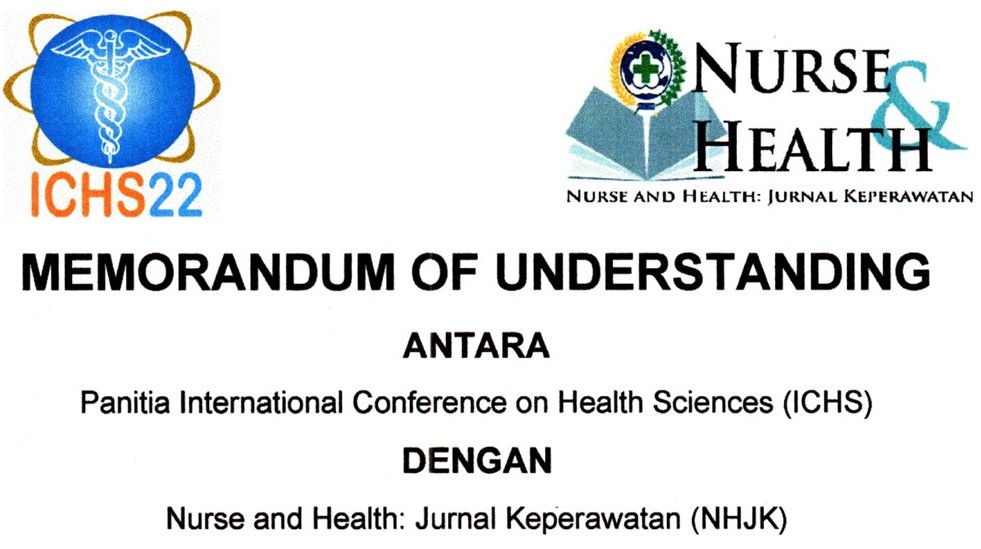THE EFFECT OF SIMULATION OF THE BASIC LIFE SUPPORT TRAINING ON NURSING STUDENTS' KNOWLEDGE
Abstract
ABSTRACTBackground: Cardiac arrest is a health problem that is increasing to be the leading cause of death in the world. The main action to save cardiac arrest aims to maintain optimal myocardial and cerebral oxygenation so that death does not occur. Providing Basic Life Support (BLS) is an effort to save and restore this function. Knowledge about cardiac arrest among health students is still a neglected problem due to a lack of awareness in seeking basic knowledge.Objective: This study aimed to determine the effect of basic life support-based simulation training on knowledge of nursing students in the city of Bengkulu.Methods: This study used a pre-experimental design with a pre-test post-test approach. The population in this study were all 61 students of the fourth semester of STIKES Tri Mandiri Sakti Bengkulu nursing students. Samples were taken using total sampling technique. Data were collected using a knowledge questionnaire containing 10 question items which were adopted from the questionnaire Yunanto et al., (2017). Data were analyzed using paired sample t-test.Result: Based on the results of the study, it was found that there was a significant effect of BLS training based on manikin simulation on nursing student knowledge with a value of t test = -15.169, p = value = 0.000 <α = 0.05.Conclusion: Nursing students need to provide knowledge about BLS from the start so that they are more confident and able to apply it in case of cardiac arrest outside the hospital. Higher education institutions should provide health education about BLS from the beginning of the academic year, so that in the following semester students are better able to improve the quality of the skills they have formed.Keywords: Basic Life Support, Knowledge, Simulation.Downloads
References
American Heart Association. (2015). FOKUS UTAMA Pembaruan Pedoman American Heart Association 2015 untuk CPR dan ECC. Medicina Intensiva. https://doi. org/10.1016/S0210-5691 (06).
Almesned, A., Almeman, A., Alakhtar, A. M., AlAboudi, A. A., Alotaibi, A. Z., Abdullah, Y., & Aldamegh, M. saleh. (2014). Basic Life Support Knowledge of Healthcare Students and Professionals in the Qassim University. International Journal of Health Sciences, 8(2), 141–150. https://doi.org/10.12816/0006080
Amin, M. Al, & Juniati, D. (2017). Klasifikasi Kelompok Umur Manusia Berdasarkan Analisis Dimensi Fraktal Box Counting Dari Citra Wajah Dengan Deteksi Tepi Canny. Jurnal Ilmiah Matematika, 2(6), 1–10.
Chandrasekaran, S., Kumar, S., Bhat, S. A., kumar, S., Shabbir, P. M., & Chandrasekaran, V. P. (2010). Awareness of basic life support among medical, dental, nursing students and doctors. Indian Journal of Anaesthesia, 54(2), 121–126. https://doi.org/10.4103/0019-5049.63650
Fadiah, E., Agustina, R., & Illiandri, O. (2019). Nurse Knowledge About High Quality Cardiopulmonary Resuscitation (CPR). Indonesian Journal for Health Sciences, 2(2), 71. https://doi.org/10.24269/ijhs.v2i2.843
Fatih, H. Al, & Rahmidar, L. (2019). Kepuasan dan Kepercayaan Diri Mahasiswa Keperawatan Terhadap Penggunaan Low Fidelity Simulator Dalam Simulasi Bantuan Hidup Dasar. Jurnal Keperawatan BSI, 7(2), 153–160.
Hernando, G. (2016). Pengaruh Pelatihan Basic Life Support Terhadap Tingkat Kesiapan Melakukan Cardiopulmonary Resuscitation Pada Mahasiswa Keperawatan Universitas ‘ Aisyiyah Yogyakarta Resuscitation Pada Mahasiswa Keperawatan Universitas ‘ Aisyiyah Yogyakarta. Universitas ’Aisyiyah Yogyakarta.
Kemenkes RI. (2014). Situasi Kesehatan Jantung. Jakarta, Indonesia: Kemenkes RI.
Muniarti, S., & Herlina, S. (2019). Pengaruh Simulasi Pelatihan Bantuan Hidup Dasar (Bhd) Terhadap Motivasi Dan Skill Resusitasi Jantung Paru (RJP) Pada Karang Taruna Rw 06 Kampung Utan Kelurahan Krukut Depok. Jurnal Keperawatan Widya Gantari Indonesia, 3(2).
Nurvitasari, M., Jainurakhma, J., & Muhammad, Z. (2020). Effect of Cardiac Arrest Management Training on the Ability of Ordinary People To Perform High-Quality Cardio Pulmonary Resuscitation. Belitung Nursing Journal, 6(4), 122–126. https://doi.org/10.33546/bnj.1117
Pande, S., Pande, S., Parate, V., Pande, S., & Sukhsohale, N. (2014). Evaluation of retention of knowledge and skills imparted to first-year medical students through basic life support training. American Journal of Physiology - Advances in Physiology Education, 38(1), 42–45. https://doi.org/10.1152/advan.00102.2013
Putri, I. A. O. C., & Sidemen, I. G. P. S. (2017). Bantuan hidup dasar. Denpasar: SMF/Bagian Anestesiologi dan Reanimasi, Fakultas Kedokteran, Universitas Udayana.
Rahmawati, I., Dwiana, I., Ratiyun, R. S., & Yesi, Y. (2020). Hubungan diabetes melitus dengan penyakit jantung koroner pada psien yang berobat di poli jantung. Jurnal Kesehatan Dr. Soebandi, 8(1), 56–62. https://doi.org/10.36858/jkds.v8i1.169
Retnawati, S. A., Widajanti, L., & Nugrahaeni, S. A. (2014). Pengaruh Pelatihan dengan Metode Simulasi Terhadap Keberhasilan Penerapan Makan Beraneka Ragam oleh Kader Pendamping (Studi di Kecamatan Trawas Kabupaten Mojokerto) The Effect of Training by Simulation Method on Cadres to the Successfulness of Diversity. Jurnal Manajemen Kesehatan Indonesia, 2(3), 212–220. https://doi.org/doi.org/10.14710/jmki.2.3.2014.%25p
Salas, E., Wildman, J. L., & Piccolo, R. F. (2009). Using Simulation-Based Training to Enhance. Academy of Management Learning and Education, 8(4), 559–573.
Setiawan, A., Ardiyani, V. M., & Metrikayanto, W. D. (2018). Perbedaan Tingkat Kognitif Mahasiswa Keperawatan Universitas Tribhuwana Tunggadewi Malang Tahun Angkatan 2017 Sebelum dan Sesudah Pembelajaran Resusitasi Jantung Paru (RJP) Anak (1-8 Tahun) Dengan Media Video. Nursing News, 3(3), 703–712.
Surcouf, J. W., Chauvin, S. W., Ferry, J., Yang, T., & Barkemeyer, B. (2013). Enhancing residents’ neonatal resuscitation competency through unannounced simulation-based training. Medical Education Online, 18(1). https://doi.org/10.3402/meo.v18i0.18726
Wayne, D. B., Didwania, A., Feinglass, J., Fudala, M. J., Barsuk, J. H., & McGaghie, W. C. (2008). Simulation-based education improves quality of care during cardiac arrest team responses at an academic teaching hospital: A case-control study. Chest, 133(1), 56–61. https://doi.org/10.1378/chest.07-0131
Authors who publish with Nurse and Health: Jurnal Keperawatan agree to the following terms:
- Authors retain copyright licensed under a Creative Commons Attribution-NonCommercial 4.0 (CC BY-NC 4.0), which allows others to remix, tweak, and build upon the authors' work non-commercially, and although the others' new works must also acknowledge the authors and be non-commercial, they don't have to license their derivative works on the same terms.
- Authors are permitted and encouraged to post their work online (e.g., in institutional repositories or on their website) prior to and during the submission process, as it can lead to productive exchanges, as well as earlier and greater citation of published work (See The Effect of Open Access). Authors can archive pre-print and post-print or publisher's version/PDF.








_resize1.jpg)















